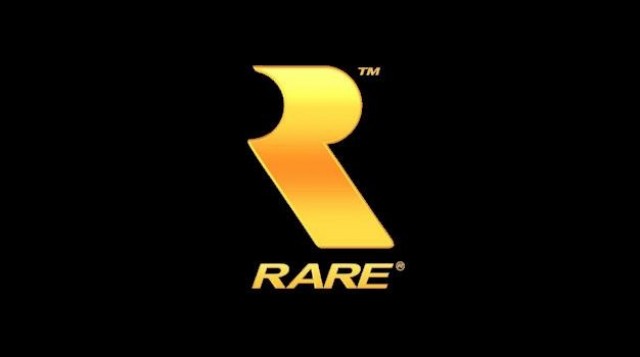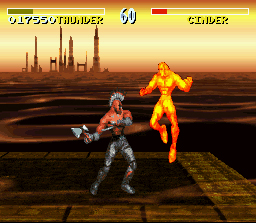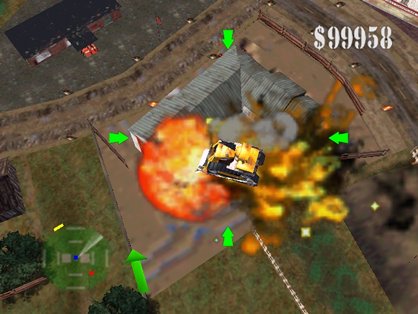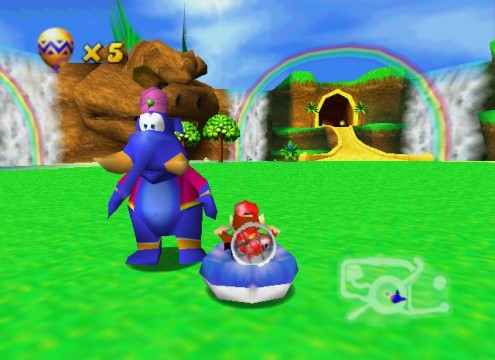
Donkey Kong, before 1994, was known mostly for his arcade games, and hadn’t even been seen for years once Donkey Kong Jr. hit the scene and stole his spotlight. Still, the character was perfect for Rare, as beyond adventures in arithmetic and a brief stint as a go-kart racer, fans didn’t have many preconceptions about his personality, background, friends, life, or anything else. This meant the Stampers and company could throw everything out the window and do what they needed to make Donkey Kong relevant to a modern audience. The grumpy gorilla went from being a vicious abductor to a gregarious banana fiend, chumming it up with his new partner Diddy Kong, his cantankerous grandpa Cranky Kong, and a whole host of other allies and baddies who populated his new world. Now, Rare had to get the basics of the game’s controls and story down.

The story was simple; villainous King K. Rool and his vile Kremlings scamper off with Donkey Kong’s banana hoard, which sends the incensed simian on a quest to retrieve it. For gameplay, Rare turned to the Super Mario series for inspiration, incorporating honed 2D platforming to make their new title as accessible to players as possible. Rare didn’t skimp on the challenge, though, keeping the difficulty moderate so that everyone would have fun with Donkey Kong. Finally, there was one last marching order Rare had to take into consideration for its new game; make it look brilliant. With Sony’s PlayStation treating players to 32-bit graphics, SNES was starting to show its age and Nintendo needed something to keep the digital wolves at bay. Those Silicon Graphics computers wound up being more important than Nintendo ever anticipated, as Rareware used them to develop the first pre-rendered graphics on a home console and make Donkey Kong’s return look like nothing else on the market. Everything was in place, and the Stampers’ Donkey Kong Country finally bowed in 1994. Then, everything changed for Rare again.
Donkey Kong Country became a raging success. Its precision play control and explosive graphics sent players in droves to buy the new title, making Donkey Kong Country the second-highest selling game on SNES of all time, with only Super Mario World, a pack-in title, ahead of it. Nintendo and Rare couldn’t have been happier with the results, and work quickly began on a sequel. Besides Donkey Kong Country, Rare had other projects percolating in the background, including Killer Instinct, a fighting game which became another fan favorite, a baseball game called Ken Griffey, Jr.’s Winning Run, and something tentatively titled Project Dream, about a boy named Edison fighting an evil pirate named Captain Blackeye. Nintendo was pleased that the efforts of Rare had helped breathe new life into SNES, but the writing was on the wall and the company knew making a new system was unavoidable in the face of Sony’s fiercely competitive console. The Stampers found themselves yet again at a crossroads, but being in Nintendo’s camp made the transition a smoother one. With a wealth of experience doing 3D rendering on the Silicon Graphics rigs, Rare would launch headfirst into the Nintendo 64 era with Killer Instinct Gold, and never looked back.

Rare had cemented itself as a premier developer in the industry, but rather than play things safe, the company continued to innovate and experiment, as evidenced by its second N64 title, Blast Corps. The game had players use heavy demolition vehicles and bots to destroy everything in the path of an unstoppable nuclear weapon transporter. The gameplay was hectic and fun, and was very popular with early system adopters. Fans were being kept happy, but behind the scenes things were getting even more interesting. A long-gestating SNES adaptation of the movie Goldeneye had been on Nintendo’s radar, and after finally disentangling itself of the legal troubles keeping the game in limbo, the company turned to Rare to develop it. Rare initially intended to keep Goldeneye 007 an SNES game, with the idea of making it a 2D shooter. However, the developer quickly came to realize that it could do something a lot more ambitious with the Goldeneye license by bringing it over to N64, where it evolved into a more free-roaming, first-person adventure game.
Nintendo liked this new approach, and as with Donkey Kong Country, lent Rare advice during development. The Stamper brothers had seen the success of first-person shooters on PC, but the genre had yet to find a place on home consoles. The team in charge of Goldeneye was tasked with not only finding a suitable first-person control scheme to mimic the accuracy of a mouse and keyboard, but make the game more cinematic and goal-oriented than any other first-person shooter that had come before it. The N64 controller’s analogue stick was the perfect solution for gameplay, and the developers made stealth and satisfying objectives a prominent part of the experience. When Goldeneye dropped in the summer of 1997, Rare had yet another landmark title on its hands and revolutionized first-person shooters on home consoles. The Stampers’ company was truly on a roll, but they weren’t done yet.

Project Dream had also been intended for SNES, but the game grew to be too ambitious for the system and wasn’t going to be able to support the developers’ vision. Like Goldeneye, work quickly shifted to N64, but progress had stuttered down to a lurch. Some of the enthusiasm of the team was waning, as the power of N64 offered new opportunities, but also made them question previous design choices. The Stamper brothers knew that Project Dream was moving along a little slower than anticipated, and looking through the team’s design work they landed upon an idea for how to get it back on the right track; swap Edison with the goofy bear that was going to be a side character.
The team liked the idea, and Project Dream now had the bear as its new lead. Development on the title was picking up speed, but it wasn’t going to be ready in time for the ’97 holiday season. Despite the boom of Goldeneye, Rare still had to bring something to the table for the holidays. Besides Project Dream, Rare had also been hard at work on a racing game called Diddy Kong Racing. Diddy’s first solo-outing was going to be a hybrid racing/adventure game, and since it was close enough to completion it was chosen to take point as the Christmas offering to consumers. There was just one catch; Project Dream‘s lead character had become very popular around the office, and was being included as a racer in Diddy Kong Racing. He’d even been named, too: Banjo. It was too late to swap out Banjo, but at the same time it seemed odd that he’d debut in anything other than his own game. While a little unorthodox, Rare decided it was fine if Banjo’s first appearance was a cameo, and when Diddy Kong Racing released, the world got its first look at the budding star.

Diddy Kong Racing was very well-received and sold a number of copies, continuing Rare’s track record of success and creativity. This was good, as the Stampers were quite busy with Project Dream (which was now being called Banjo-Kazooie) and it would’ve been awkward to have the game’s star tethered to a train wreck. Much had evolved and been changed since the title’s days on SNES. Blackeye was out, and Banjo had a new partner, the titular Kazooie, who was a red bird that lived in the bear’s backpack. Rare was basing the play control of the game off of Nintendo’s Super Mario 64, but didn’t want to seem like they were simply re-skinning the 3D platformer with its own characters. To insure a clear level of distinction, Banjo and Kazooie would team up to perform a variety of unique moves. The duo could shoot eggs, pile drive into the ground, fly, and do a number of other actions to make the gameplay varied and original. There was also a witty narrative being woven into the game that would further separate Banjo-Kazooie from Super Mario 64. Rare was creating something special with the title, and Nintendo was taking notice yet again.




 ShareThis
ShareThis







I live very close to where these guys grew up. It’s a bit weird how they’ve disappeared off the radar.
Wonderful over-view and summary.
One aspect of the N64 generation that this article misses however is the impact the PlayStation was having throughout it.
When the N64 launched, Nintendo was still considered the king of the throne. Yet, as the next couple years went by, key franchises starting moving over to the Sony console (Final Fantasy being the major one). The promise of more creative control and storage space didn’t hurt either.
Soon, as amazing as Nintendo’s past may have been, they clearly didn’t understand a gamer’s priorities when they would not only lose all Final Fantasy, Chrono Trigger, and Mana properties – but then never even bother to fill the gap. Somehow, progress for Nintendo went from having several hundreds of titles available, with dozens of them being timeless (for the average gamer) on the SNES, to having around a hundred titles available, with a dozen or so being timeless (for the average gamer) on the N64.
What I never see mentioned, anywhere, is the real reason why Nintendo got the “we just have collectable games” moniker. Because a great majority of the titles on the system were collect-a-thons. As much praise as you may heap upon Banjo-Kazooie, it wasn’t the really colourful world, or the intriguing story-time narrative that grabbed my attention, instead, it was the endless pile of notes, and combs, and jingos, and they probably had coins and balloons in there somewhere too that I had to endlessly vacuum up.
Perhaps that wouldn’t have been that noticeable, but as the article stated, the majority of releases on the N64 came from both Nintendo and RARE. If you wanted a guarantee of a great game – you would look for the “N” or the “R.” So, people kept going to these games expecting the same breadth of diverse game-play as seen on the SNES – and found themselves collecting red coins in Super Mario 64, and bananas in Donkey Kong 64, and jingos in Banjo-Kazooie, and more jingos in Banjo-Twooie, and even in Conkers and Jet Force Gemini you had to pick up stuff – there was nary a three-dimensional environment to be found whose sole purpose wasn’t you collecting a bunch of useless crap.
Also; advertising. With RARE and Nintendo being the safe bets, the majority of collect-a-thon games were the ones played loudest over the speaker. For every Banjo-Tooie game, you have at least one Body Harvest, Space Station: Silicon Valley, Super Smash. Bros., Conker’s Bad Fur Day, or Turok: Dinosaur Hunter. But those games never received any television attention, which was something people still watched back in the day.
Added to that the more “Western” style elements of what the PlayStation was offering – zombies in Resident Evil – Escape From New York style spy-protagonist in Metal Gear Solid – alongside a huge heaping of everyone’s favourite Eastern RPGs – and the conversation Sony was having with the consumer was so much more broad in scope and daring than what Nintendo was offering. People who had PlayStations were busy answering their friend’s questions about all these bizarre, cool adventures they were having four to five years into the thing. People who had N64’s were busy telling their friends that their machine does more than play Super Mario 64 and Super Mario 64 type games with less than a year before the GameCube came out.
Perhaps RARE was getting tired and fed-up of seeing their more creative and nuanced projects (Conker’s Bad Fur Day, Blast Corps) getting ignored, while their more straight-forward and been-here-done-this-before games (Banjo-Tooie, Donkey Kong 64) were being touted as the design-paradigm for the system. Back in the SNES days, RARE was all about introducing beautiful graphics and colourful worlds into their titles. But with the N64, and their desire to bring story-telling more distinctly into that fold (Perfect Dark, Conker’s Bad Fur Day), titles such as Donkey Kong and Banjo, which received the attention and Nintendo-backed fan-fare, relied heavier on the 2-dimensional character aesthetic (What you see is what you get). Watching the video-game world literally grow up on the competitors machine, while having your forward-thinking ideas and most brilliantly polished works end up swimming in obscurity, I could understand the “enthusiasm” and “motivation” for RARE and the Stamper Brothers not really being there any more.
By the time the GameCube hit, they couldn’t even pretend to like the collect-a-thon format any more, as seen with the relatively forgettable Star Fox Adventures.
RARE was brilliant – but I believe the direction and emphasis Nintendo wished to take their “brand” played in direct contrast to what RARE wanted to do with the new tools being presented to them. Unfortunately, being tied so close to one another, they couldn’t work with separate mission statements. Or, more realistically, Nintendo wouldn’t let them, especially with their increased stake in the company (and having lost so much 3rd party support so quickly).
The Nintendo-RARE relationship benefited Nintendo throughout its entire life-time, but really benefited RARE the most during the SNES days. I couldn’t help but believe that as an independent company, or with a publisher that was willing to advertise some of their more risky and daring projects, the company might not have disbanded in the fashion it did. Having visited the local video-game store recently, I took a look at their selection of used games. A copy of Conker’s Bad Fur Day on the N64, with a scratched label, was selling for $240. That’s more than they were asking for a used Wii-U.
Think about that for a moment.